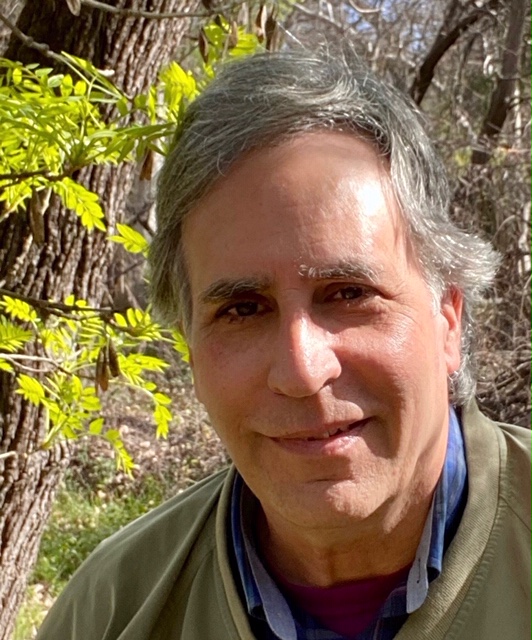Reflections on the Tsunami
The tsunami in the Indian Ocean that killed two hundred thousand people struck a year ago today. Triggered by a 9.0 earthquake off the coast of Sumatra, few saw it coming. The ancient Jarawa tribe was the only group in the region not to suffer any casualties. That’s because, in the words of one fisherman, they “knew how to look.”
A Jarawa fishing boat was out to sea in the vicinity of a few Thai boats. The Jarawa saw the water begin to roil and whirlpool, ‘as if it was being stirred from the depths of the earth.’ They moved as quickly as they could to deeper water, and were saved, while the Thai boats were all lost.
When asked why the Thai fishermen didn’t leave the area as well, the Jarawa said it was because they were caught up in what they were doing, and didn’t know how to look.
Tradition certainly played a part, but the crucial thing is that the indigenous people had direct perception, as they were living in the present. The Jarawa onshore also paid attention when they saw the water recede, and, drawing on ancient knowledge, fled up into the forest.
The story of Jarawa survival seems to be a parable for what so many of us, living on this beautiful planet as tourists and tourist servers, have lost. But the issues go much deeper, touching on questions of tradition, myth, and God.
Even so, it is noteworthy that the economies of the devastated regions are completely dependent on tourism. Indeed, the primary reason the tsunami victims received such an outpouring of sympathy and money from the West was because thousands of tourists were also swept out to sea. (I saw a report today in which one California couple said they were doing their part to restore a distressed area by spending their vacation at a new, five-star hotel, which was under construction when the tsunami struck. Such noble sacrifice!)
For those who have never experienced an earthquake, a 9.0 temblor is unimaginable even to one who has felt the ground heave from a major quake. I was living near the epicenter of the 7.1 Loma Prieta quake when it struck the San Francisco Bay Area in 1989, throwing furniture and the contents of the refrigerator onto the floor. It also collapsed freeways and killed 70 people in earthquake prepared California. And that was a small quake by comparison.
Professor of Earth Science Jelle de Boer views earthquakes and volcanoes as living agents of change in the course of human history. “Some earthquakes have had philosophical repercussions, some have influenced religions, and some have affected entire societies and cultures, and yes, even history.”
It is still too soon to tell what effect the tsunami will have on human history. But we can reflect on what the Jawara have to teach us, and what they do not. On one hand, the way they live points to the perennial importance of giving the highest priority to the present, to living from awareness and attention to what is.
On the other hand, we have no reason to regret the loss of superstition and mythmaking that goes with traditional cultures. The Jarawa say that the sea was hungry for human spirits and that is why it swept in and sucked away so many people. With the obsolescence of tradition, we must find new meanings that don’t contradict what science empirically demonstrates.
The Jarawa are living reminders of the human past, living the way all humans once did. The modern world must leave them alone, as few people have been left alone, to work out their own fates “upon the rack of this tough world.”
Did the deaths of all those thousands of children hold some meaning, or was simply an act of random catastrophe in an indifferent universe? The meanings, surely, are what we draw from the event. After all, the cosmos breathed the capacity for creating meaning into us.
If one feels, as I do, that the division within and between humanity is an abomination in a universe of seamless wholeness, then the Christmas tsunami may go down in history as a great teacher. After all, the human heart was moved by this event as perhaps no event in human history, though whether enough people are learning remains in doubt.
One feels the ripples of the tsunami not by looking out over the ocean, which mirrors the incomprehensible vastness of space. Rather one sees the human capacity for meaning, learning, and harmony in the thousands of candle-lit balloons lofted into the night sky to commemorate those sacrificed to the sea.
- Martin LeFevre is a contemplative, and non-academic religious and political philosopher. He has been publishing in North America, Latin America, Africa, and Europe (and now New Zealand) for 20 years. Email: martinlefevre@sbcglobal.net. The author welcomes comments.



 Gordon Campbell: On Why The US Stands To Lose The Tariff Wars
Gordon Campbell: On Why The US Stands To Lose The Tariff Wars Eugene Doyle: Before It’s Too Late - Reimagine New Zealand’s Military Future
Eugene Doyle: Before It’s Too Late - Reimagine New Zealand’s Military Future  Binoy Kampmark: Gender Stunts In Space - Blue Origin’s Female Celebrity Envoys
Binoy Kampmark: Gender Stunts In Space - Blue Origin’s Female Celebrity Envoys Richard S. Ehrlich: A Deadly Earthquake & Chinese Construction
Richard S. Ehrlich: A Deadly Earthquake & Chinese Construction Ian Powell: It Does Matter To Patients Whether They Are Operated In A Public Or Private Hospital
Ian Powell: It Does Matter To Patients Whether They Are Operated In A Public Or Private Hospital Gordon Campbell: On Marketing The Military Threat Posed By China
Gordon Campbell: On Marketing The Military Threat Posed By China